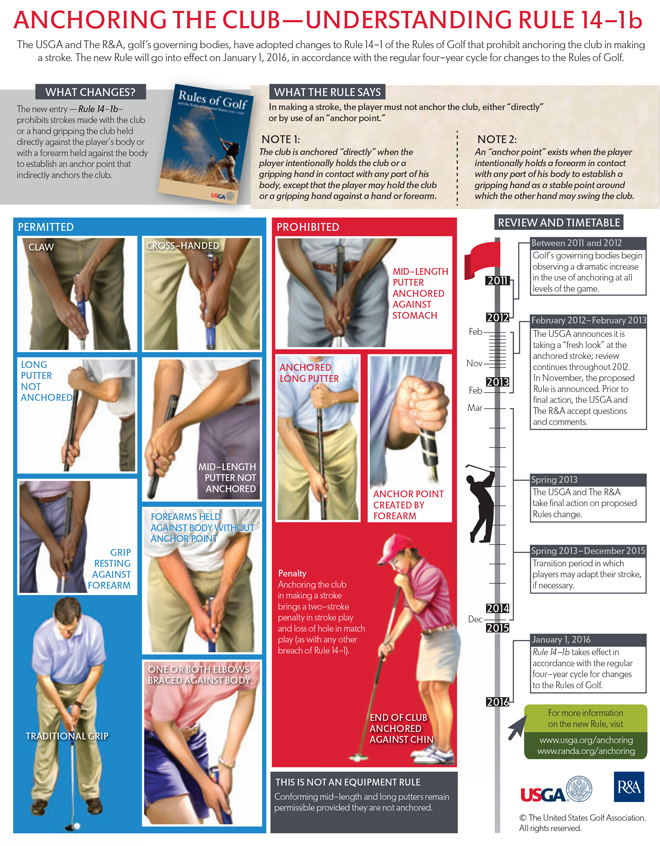What is belly putting, and why did pro golf ban it?
No, it does not involve putting with one's stomach


Golf's governing bodies on Tuesday announced a new rule that will prohibit players from anchoring putters against their bodies, a practice commonly known as "belly putting" or, less comically, "anchor putting."
The controversial change, which was first proposed last November, will go into effect January 1, 2016.
In a statement, the two groups, United States Golf Association and the R&A, said the new rule, called 14-1B, was necessary because anchor putting is a "substantially different form of stroke that may alter and diminish the fundamental challenges of the game"
The Week
Escape your echo chamber. Get the facts behind the news, plus analysis from multiple perspectives.

Sign up for The Week's Free Newsletters
From our morning news briefing to a weekly Good News Newsletter, get the best of The Week delivered directly to your inbox.
From our morning news briefing to a weekly Good News Newsletter, get the best of The Week delivered directly to your inbox.
"The new Rule upholds the essential nature of the traditional method of stroke and eliminates the possible advantage that anchoring provides, ensuring that players of all skill levels face the same challenge inherent in the game of golf," said USGA President Glen D. Nager.
Anchor putting isn't completely rampant, but it is a widely used practice in the sport. As ESPN's Bob Harig notes, four of the last six major championship winners used anchored putts. And according to The New York Times, 15 percent of PGA Tour golfers use an anchored putt.
While players will no longer be allowed to brace clubs against their bodies to stabilize their putting stroke, they will be allowed to keep using the longer putters often needed to perform the technique, so long as they swing them as they would any other club.
The USGA produced this handy infographic to illustrate what will and will not be allowed:
A free daily email with the biggest news stories of the day – and the best features from TheWeek.com

(Courtesy USGA)
In a sport ruled by tradition, the proposed change drew intense criticism. Both the PGA tour and the PGA of America, which represents thousands of golf instructors nationwide, opposed the new rule, arguing that it could harm the sport's popularity.
"We are disappointed with this outcome," Ted Bishop, head of PGA of America, said in a statement. "We are concerned about the negative impact it may have on both the enjoyment and growth of the game."
Both PGA groups added that they could not yet say whether they would enforce the rule during their events, but that they would soon hold meetings to determine how to proceed.
Plenty of golfers and competitive golf officials have long-sought the change, saying it closes a loophole that allows players to exploit the basic fundamentals of the game. Legendary golfer and eponymous summer drink Arnold Palmer, the PGA European Tour, and the LPGA have all endorsed the rule. Tiger Woods has also been an outspoken critic of the practice, saying, "It should be mandatory to have to swing all 14 clubs."
Jon Terbush is an associate editor at TheWeek.com covering politics, sports, and other things he finds interesting. He has previously written for Talking Points Memo, Raw Story, and Business Insider.



